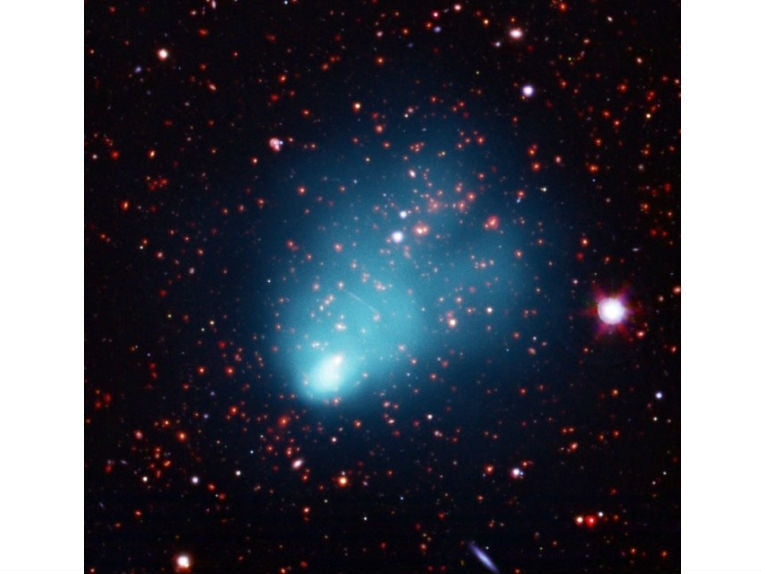The biggest and hottest galaxy cluster in the distant universe has been discovered. The huge galaxy cluster, ACT-CL J0102-4915, more than seven billion light years away, has been dubbed El Gordo (The Fat One) by Chilean researchers who located it.
It was discovered in Chile at the North American Space Agency's (NASA) Chandra X-ray Observatory and the Atacama Cosmology Telescope (ATC).
Study leader, Felipe Menanteau, of Rutgers University, in New Brunswick, New Jersey, USA, says, "This cluster is the most massive, the hottest, and gives off the most X-rays of any known cluster at this distance or beyond."
Galaxy clusters are created when smaller groups of galaxies join and are held by gravity - the biggest objects to do so. Their creation is reliant on dark energy and dark matter. Dark energy is a theoretical form emitting negative pressure that leads to the increasing expansion of the universe. Dark matter is believed to exist because of its gravitational effects, even though any light it absorbs cannot be detected.
Researcher, Jack Hughes, also of Rutgers University, says, "Gigantic galaxy clusters like this are just what we were aiming to find. We want to see if we understand how these extreme objects form using the best models of cosmology that are currently available."
The fact that El Gordo is so far away means it can be seen at a young age. It was found because of the Sunyaev-Zeldovich effect, where high-energy cluster electrons distort the cosmic microwave background radiation when colliding with low-energy photons.
X-ray data from Chanra and the aptly-named 8-metre Very Large Telescope in Chile, reveal that El Gordo is the scene of a high-speed collision between two galaxy clusters, similar to the Bullet Cluster, which is three billion light years away from Earth.
Cristobal Sifon, from Pontificia Universidad de Catolica de Chile (PUC), in Santiago, says, "This is the first time we've found a system like the Bullet Cluster at such a large distance. It's like the expression says: if you want to understand where you're going, you have to know where you've been."
The findings of the team are being revealed in more detail at the 219th meeting of the American Astronomical Society, in Austin, Texas, USA, and will be published in The Astrophysical Journal.










